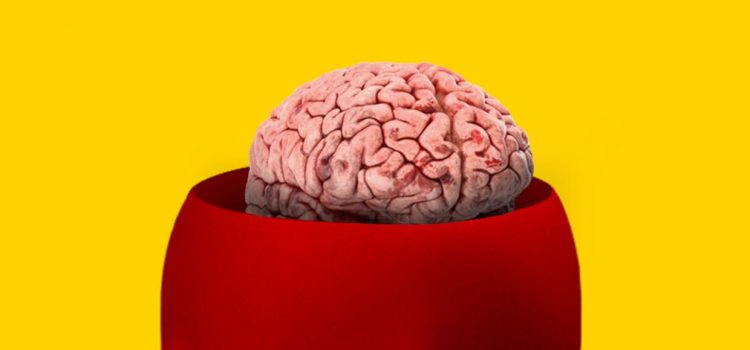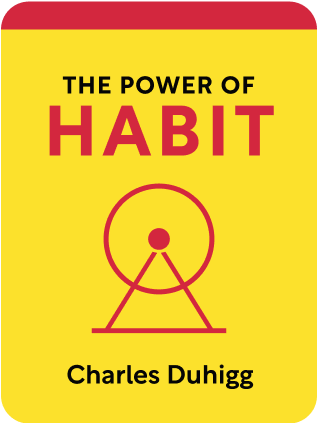

This article is an excerpt from the Shortform book guide to "The Power of Habit" by Charles Duhigg. Shortform has the world's best summaries and analyses of books you should be reading.
Like this article? Sign up for a free trial here .
What exactly are habits? How are habits formed and why are they so difficult to break?
In his book The Power of Habit, Charles Duhigg explains why and how the brain creates habits in order to save mental energy. He details every step of habit formation, from the first time you consciously choose to take any action to how to rewire your brain to replace bad habits.
Keep reading to learn how habits are formed in the brain and why they are so difficult to break.
What Are Habits?
Duhigg argues that habits are unconscious decisions you make about how to act, think, or feel without actually thinking about them. While you may assume that you’re continually making conscious decisions, Duhigg claims that more than 40% of your daily behaviors are driven by habits that you automatically engage in without conscious thought. Since your habits inform such a large part of how you think and what you do, they have an enormous impact on your health, productivity, relationships, and overall happiness.
(Shortform note: In Atomic Habits, James Clear agrees that you engage in unconscious habits, but he argues that more than 50% of your daily behaviors are driven by these habits. Because your habits play such a significant role in your life, Clear suggests that you go beyond simple reflection to develop awareness around your unconscious behaviors and their effect on you: He recommends that you track all of the actions you take on a daily basis. Then, determine which of your habits are beneficial or harmful to your overall well-being.)
You Form Habits to Save Mental Energy
So, how are habits formed? To explain how habits are formed and how they develop into automatic behaviors, Duhigg draws on neurological research that explores the specific procedures your brain relies on to efficiently process information and help you function.
According to this research, every time you attempt to learn or do something new, you have to apply conscious effort to do it right. As a result, your brain explodes with activity as it focuses on processing and learning new information so that you can make informed decisions about how to move forward with your task. This process takes up a lot of mental energy and restricts your ability to think about other things.
Duhigg explains that your brain is designed to save mental energy on the things you do most often to avoid information overload and function efficiently. It does this by learning the sequence of actions it takes to achieve something. It then converts this sequence into an automatic routine and stores it so that you can perform your daily tasks automatically (without conscious thought). This explains why, the more often you practice doing certain things, the easier it becomes for you to do them without thinking. The more often you perform your tasks automatically, the more your brain gets to relax.
Without these automatic routines, Duhigg notes, you would have to relearn every single thing you do—brushing your teeth, tying your shoelaces—every time you do them. This would involve making decisions every step of the way (How much toothpaste do I need to use? Which foot does this shoe go on?) and leave you with very little mental energy to think of or achieve anything else.
| Automatic Routines Require Strong Neural Pathways What Duhigg says here about the brain’s learning and automation processes isn’t new—neuroscientists and psychologists agree that the brain relies on automation to avoid information overload. However, Duhigg doesn’t explain exactly how your brain converts a sequence of actions into an automatic routine. We’ll explore the molecular activity that occurs inside your brain to clarify how your brain transitions from “learning” to “compartmentalizing as an automatic routine.” According to neuroscience research, every time your brain creates a new automatic routine, it changes its physical structure by strengthening specific neural pathways. Here’s a very brief overview of neural pathways: -The brain consists of a dense network of pathways consisting of neurons, or information messengers. -Synapses transmit sensory information through this network of neurons. -This sensory information is then stored in your short-term memory while your brain compares it to the memories you’ve stored in your long-term memory. This allows your brain to judge how relevant the new information is to your habitual behaviors (the processes stored in your long-term memory) and determines whether it should be kept or discarded. Neuroscientists believe that your memory and recall rely upon the relationship that your neurons have with each other. Each time you learn something new or attempt to change your habitual routine, your brain applies conscious effort and attention to form new neural connections and pathways. The more you practice performing a certain sequence of actions, the stronger the relationship between the corresponding neurons in your brain, and the more likely your brain is to store the sequence as an automatic routine. |
How Does Your Brain Know When to Cede Conscious Control?
According to Duhigg, even though your brain wants to save mental energy, it also needs to ensure that it remains alert and involved during times when you need to pay attention—for example, when you’re crossing a busy road or using a chainsaw. Consequently, when it learns the sequence of actions for your most common routines, it analyzes the sequence to figure out when the activity starts and ends. It uses this information to compartmentalize your routines so that it knows when it needs to be alert and in charge (conscious thoughts), and when it can function on autopilot and take a rest (automatic routines).
For example, when you’re driving to a new location and aren’t sure of the directions, your brain is extra alert as it takes notice of every street sign to help you make decisions about which way to go. On the other hand, when you’re driving to a place you know well, you don’t need to concentrate so hard to get to where you’re going. Unless an unexpected diversion or car malfunction requires attention, your brain knows that it’s safe enough for you to function on autopilot while it takes a break.
| Ceding Conscious Control Limits Your Perceptions and Delays Your Reactions While Duhigg argues that your brain effectively compartmentalizes your routines so that it remains alert when you need it, some psychologists argue that your brain fails to correctly judge the potential risks of these habitual routines. They claim that while your automatic routines do allow you to think of other things while involved in an activity—for example, you can think about your to-do list while driving to work—being in autopilot mode limits your awareness of your surroundings and delays your reactions. They explain that, when your brain’s in autopilot mode, it’s unable to plan ahead or come up with responses to the potential hazards that you may face—because it’s not consciously processing possible obstacles in your environment. Consequently, if you’re in autopilot mode while on your daily commute, you’ll be caught off guard and slow to respond if something unexpected happens, such as a pedestrian running into the road or a car abruptly braking in front of you. This information clarifies why drivers are more likely to have accidents closer to home than they are to have them in unfamiliar locations. |
Habits Begin With a Conscious Decision
Now that we’ve explored how your brain relies on automatic routines so that you can get through your day without overloading it, we’ll explore how this research specifically relates to the formation of habits.
Duhigg explains that every single one of your habits started with a conscious decision to do something—all of your habits began this way even if you don’t remember making the initial decision. Over time, as you repeatedly made the same decision, your brain took over to develop an automatic pattern of behavior that turned this decision into a habit. This pattern of behavior is stored in your brain and encourages you to engage in your habits automatically.
(Shortform note: You may doubt Duhigg’s claim that every habit begins with a conscious decision because you don’t remember deciding to start your habit. Psychologists clarify this by explaining how underlying motivations impact the way you initially form and later remember your decisions. The initial decisions you made were an attempt to fulfill an (often unconscious) need or motivation: You were more focused on fulfilling your needs than on the specific actions you took to fulfill them. For example, you wanted to fit in with your social group so you smoked a cigarette, or you wanted to ease your stressful thoughts so you had a drink. Over time, this changed: You focused more on the action itself than on why you initially chose this action.)
Why Bad Habits Are Difficult to Break
Your brain creates automatic patterns based on the routines you engage in most often. While this process does offer many benefits such as not having to relearn everything you need to do on a daily basis, there is a significant drawback: Your brain permanently stores these patterns even if your habits are bad for you. According to Duhigg, this permanent storage explains why bad habits are notoriously difficult to break. Without deliberate intervention, you continue to automatically engage in these habits.
This explains why many people continually try and fail to change “bad” habits they’d prefer to avoid such as smoking or drinking too much, binge-watching TV, or shouting at their kids every morning. They decided often enough to take a specific action, their brains recorded the pattern, and now they automatically carry out this pattern on a regular basis regardless of their current preferences.
(Shortform note: Neuroscientists confirm that once your brain permanently stores your automatic patterns, it’s not possible to delete them. However, neuroplasticity research confirms that it’s possible to weaken these patterns so that your brain no longer relies on them for instructions about what to do in a given situation. This weakening process involves practicing new behavioral patterns to encourage the formation of new neural pathways in your brain. We’ll cover this research more in Part 4 of the guide.)

———End of Preview———
Like what you just read? Read the rest of the world's best book summary and analysis of Charles Duhigg's "The Power of Habit" at Shortform .
Here's what you'll find in our full The Power of Habit summary :
- The 3 steps to change your habits
- Why habits are at the root of success in football
- How social movements are just an expansion of habits from individuals to communities






